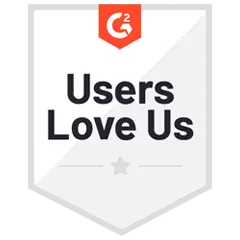The subscription model is a great revenue stream because it offers recurring income with a high potential for growth.
However, since it technically costs more, selling subscriptions come with their own unique challenges.
In this guide, let’s take a look at how you can effectively sell software subscription services and products effectively, and position your organization for growth!
Target. Target. Target
There’s a reason why we prioritize ABM, and that’s because it can provide you with a targeted outline on how to go after your ideal customer.
Spending thousands of dollars in outreach, ads, and marketing won’t mean much if you’re not targeting the right people.
Targeting the right people first relies on you defining who your ideal customer is, after that it’s a matter of looking for those customers and building data that paint a picture of who they are, then creating messaging that resonates with them.
The other great benefit of targeting is that it helps you identify niche markets that you can take advantage of.
If you don’t get your targeting right, you won’t be able to find the right people to subscribe to your solution.
Related: SaaS Marketing Insights: A Guide to Selling Software Plus Services
Focus on the Customer Care
Subscriptions are a long term engagement and this means you’ll be dealing with your customers for more than a year since you’re essentially reselling them the same product again and again.
Software subscriptions that have a good track record of customer service usually stand out because prospects want to know if you’re willing to go the extra mile to take care of their needs.
Options such as 24/7 customer support across multiple platforms, good warranties, and even knowledge bases are all a great start.
They tell a prospect that you are with them for the long haul.
Offer a Free Trial
A free trial is one of the best ways that you can encourage people to try out your SaaS solution. Everyone claims to be the best, what better way of proving it to your customers than by letting them check it out?
Marketing and product teams like the free trial approach because it helps them provide actual proof that the product works as intended.
Here’s what you have to keep in mind with free trials.
Make sure that you give your subscribers an ultimatum. Keep the trial set to somewhere between two to four weeks so that they can thoroughly explore its features and make sure that you tell them when time is nearly up.
Also, you don’t always have to collect their credit card information earlier on. Companies that offer a free trial with no strings attached do better because they remove barriers to entry and they show customers that they’re after providing solutions more than increasing revenues.
Related: Selling Your Enterprise Software Products and Services in Asia
Special Offers
We all know that special offers work, but you need to strategize the way you use them.
Firstly, don’t offer special offers all the time, it cheapens the product. There will be no incentive for a customer to act on a CTA to buy a product at a discounted price today when they know there will be another offer right around the corner.
Next, create personalized offers.
Personalized offers take advantage of account-based marketing to determine what type of offer would work for who. These specialized offers have a greater chance of working because they are tailored to their audience.
And, lastly, get creative. You can create bundles, group buys, team accounts, personal accounts, annual offers, and use a little FOMO.
Take Advantage of B2B Influencers
B2B influencers are market or industry leaders that have built up a reputation in their chosen field. Just like B2C influencers, they command their own audiences, have their own networks, and have a “voice” that prospects pay attention to.
Getting B2B influencers and industry leaders to both promote and endorse your product allows you to build social proof. These are people that have spent years building trust in their industry, and that image is immediately associated with your brand.
Don’t forget that most B2B influencers also control very specific niche markets so getting support from an influencer allows you access to whatever unique market they have. This expands your product’s surface area and allows you new markets to experience growth.
From a resource standpoint, it’s sometimes more affordable to get a B2B influencer than pay for ads on social networks.
Use Case Studies
Case studies are another great way to build social proof because it shows real companies that have real experience with your solution.
This is highly appealing, especially for more complex and expensive solutions because companies and DMUs that are inclined to buy want a proof of concept.
By being able to get case studies from previous users of your products, you get to explain how your solution has helped people grow and use data to back up your complaints.
Going down this road can be difficult in the beginning, but a couple of case studies are all you need.
If you’re working with several industries, try to get a case study per industry.
Related: The Many Ways of Selling your ERP Software Products
Once you get the customer targeting right in the beginning, you should be at a position to grow your subscription model. Don’t forget to nurture the leads that you have and guide them through your funnel so that you’re more efficient with your campaigns.
Also “subscribe” to our newsletter for more great guides like this one!











